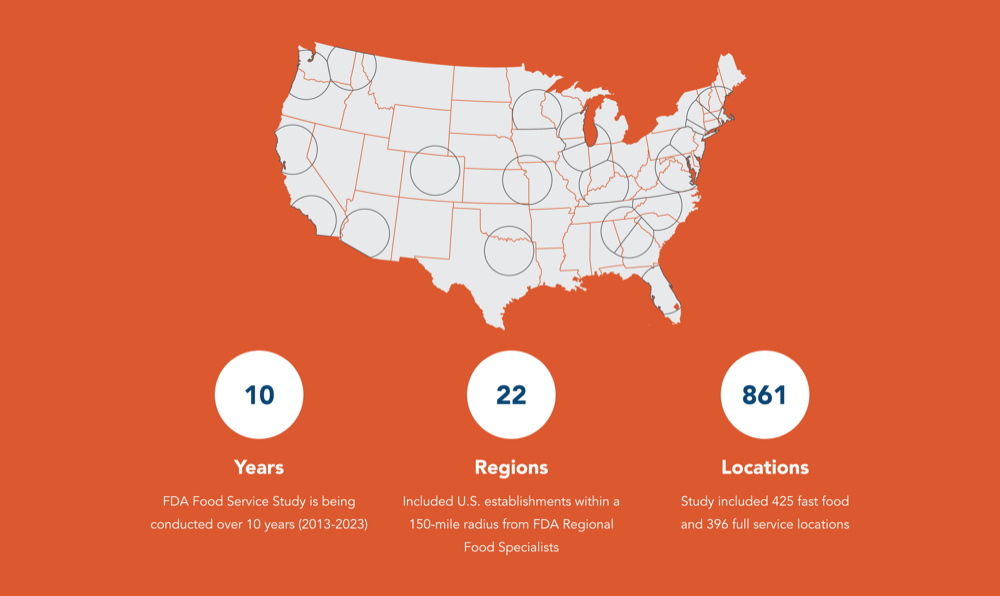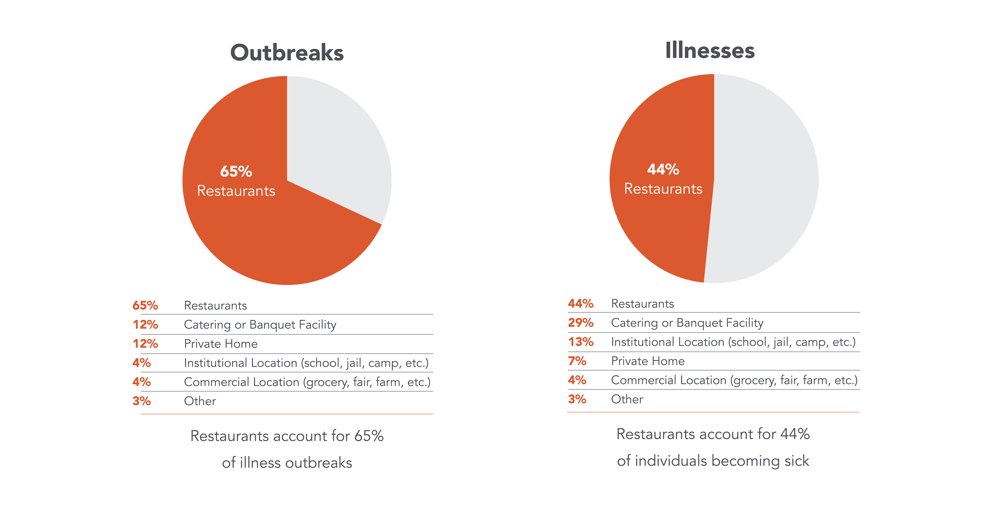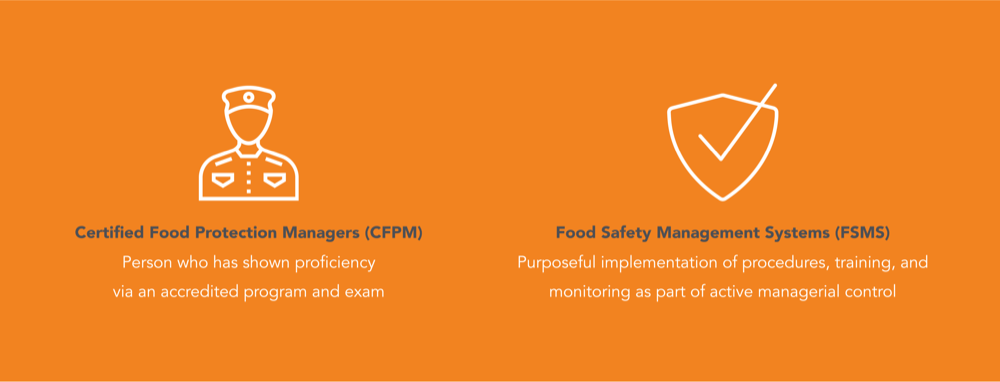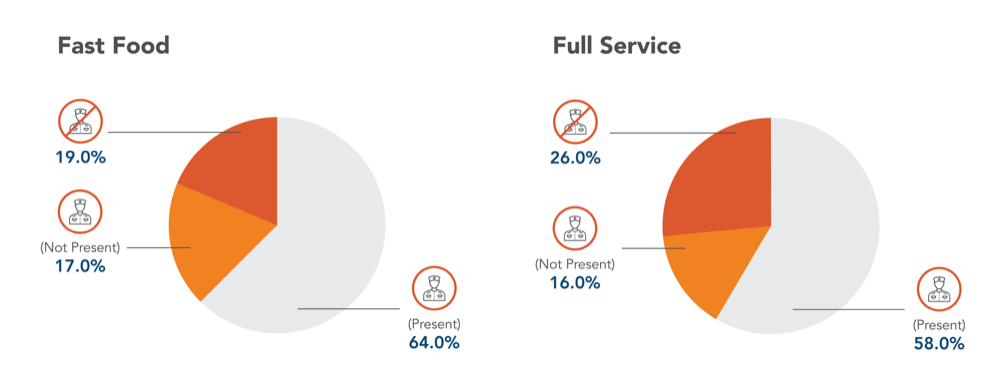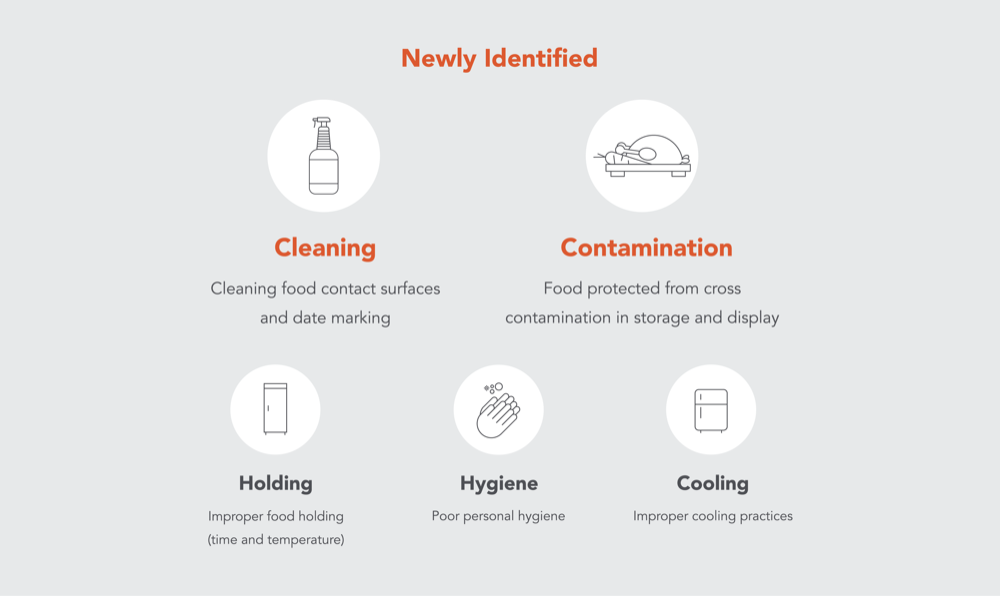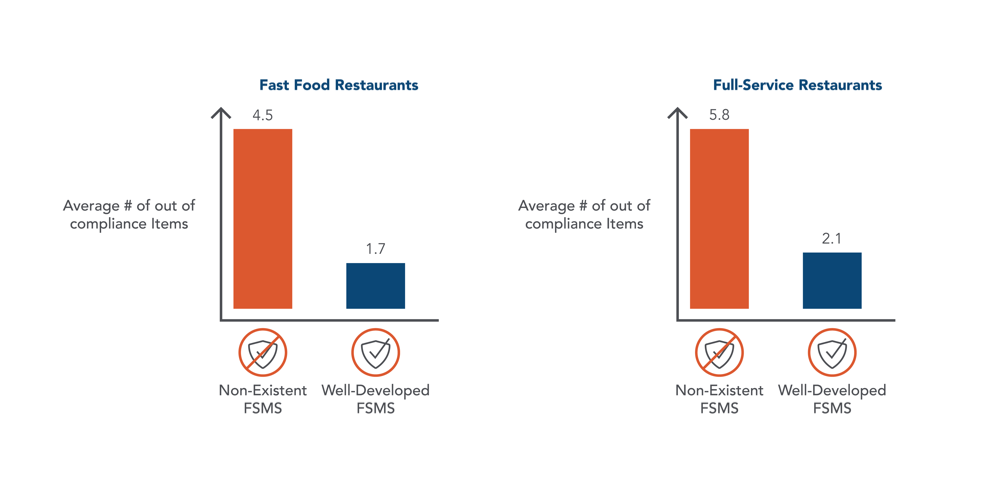Written by SmartSense | Food Safety, HACCP
Explore solutions built for your industry
Our customer-proven solutions monitor medications and food inventories for some of the most recognizable names in the industries of healthcare, food service, and transportation, and logistics. See how our solutions adapt to your industry needs.
SEE SOLUTIONSKroger Health Strengthens Compliance Visibility with SmartSense
Watch The VideoLEARN
Questions? Call +1 (866) 806-2653 to speak to our experts.
Schedule demoQuestions? Contact us.
Call +1 (866) 806-2653 to speak with our experts or get started with a demo.
CONTACT USAbout Us
SmartSense was created to use the power of the Internet of Things (IoT) to help our customers protect the assets most critical to the success of their business.
See our storyCONNECT. PROTECT. RESULTS.
Questions? Call +1 (866) 806-2653 to speak to our experts.
Schedule demoPlease select your login
May 22, 2019
How Proactive Organizations Solve for Weaknesses in the Food Chain
Foodborne illness remains a major public health concern in the United States. As estimated by the Centers for Disease Control and Prevention (CDC), outbreaks cause approximately 48 million illnesses, 128,000 hospitalizations, and 3,000 deaths each year.
As consumer demand for dining out has led to increased spending in both fast food and full service restaurants, the restaurant industry has become a major driver of not only foodservice, but also foodborne illness. Along with this high demand comes the need for careful attention to food safety practices and behaviors that minimize the incidence of outbreaks. In response, the Food and Drug Administration (FDA) has passed legislation to combat foodborne illness. But the question remains: has it been effective?
In this post, we review a recent study on foodborne illness conducted by the FDA that sheds light on the need for food safety standards in restaurants. In short, the study concluded that:
“...an inadequate food safety management system (FSMS) was the strongest predictor of data items being out-of-compliance in both fast food and full-service restaurants… the average number of out of compliance items is greatly reduced when there is a well-developed FSMS.”
The Food Chain: Strengths & Weaknesses
It’s important to recognize the many passionate people in the food industry, from manufacturing to food service, who are working hard to improve the supply chain. Although it can be easy to focus on the negative, there’s a lot to be optimistic about.
Strengths in the Food Chain
Most significantly, the food industry can be grateful for the existence of federal agencies dedicated to food safety. Agents at the FDA and U.S. Department of Agriculture (USDA) provide expertise, regulations, and recommendations regarding the safety of all types of food products – in particular those perceived to be at higher risk, such as ready-to-eat foods or products that have historically been associated with an outbreak or recall.
Another strength is a renewed focus on distribution. Previously, most attention has been paid to food products, manufacturing, and food service, but not so much to transportation methods that link the chain together. Moving forward, concern for distribution practices is being more fully incorporated into food safety plans from farm-to-fork.
Finally, commercial expectations by individual food companies are strong drivers for improvement. Of course, every company involved with the food industry must be compliant with regulations. But from the standpoint of commercial success, second and third party audits are driving companies to exceed the minimum regulatory requirements in the pursuit of net profits.
Weaknesses in the Food Chain
The most concerning and visible weaknesses are the number of food recalls and outbreaks of foodborne illness that continue to plague the food industry. When bad news reaches the public, it erodes trust between the food industry and consumers. All the more reason restaurants and retail food operations must put mechanisms in place to improve food safety, reduce recalls, and protect public health.
Thankfully, the FDA and USDA are currently meeting most of their inspection goals. For 2018, the FDA estimated they would conduct at least 400 comprehensive inspections of domestic facilities that produce human food, but ended up conducting more than 400. As for animal food, the goal was to conduct 304 inspections, with 505 actually conducted. The agency is exceeding their own estimates of what they could accomplish.
But are they doing enough?
The FDA has limited inspection resources. Many manufacturing facilities see an FDA inspector only once every 2-3 years, often because of a shortage of auditors. Additionally, the FDA and USDA face challenges when communicating effectively with each other. Digging deeper into the regulatory environment, more than 3,000 state, local, and “tribal” entities help monitor food safety in the US. Such a complex system cannot help but take a patchwork approach to food safety, when consistency is preferred. Underlying all this complexity, national regulations don’t always apply to small or local businesses, due to exemptions and exclusions.
We need to take a closer look at the standards that are currently in place, along with the risk factors we’re trying to control, and how a better system can meet those challenges.
A Review of the FDA Report
A recently published FDA study, the first installment of a much larger 10-year study that began in 2013 and will end in 2023, analyzes key data to provide insights into these pressing issues.
The FDA previously conducted a separate 10-year study from 1998 to 2008 to measure trends in the occurrence of foodborne illness risk factors and food safety practices. At the conclusion of the study, the agency determined that it needed additional research to identify the root causes for all poor retail food safety practices and to determine the most effective intervention strategies and inspection approaches for enhancing the safety of the nation’s food protection system.
Released November 2018, the latest report will act as a baseline to analyze trends from both past and future data collections. Specifically, the FDA investigated the relationship between food safety management systems (FSMS), certified food protection managers (CFPM), and the occurrence of risk factors and food safety behaviors and practices commonly associated with foodborne illness in retail and food service establishments.
Scope of the Study
The scope of the FDA study was nationwide: 425 fast food and 396 full service locations were studied in within a 150-mile radius from a base of FDA Regional Food Specialists, thereby creating a good cross section of the country. The FDA specifically evaluated the relationship and impact of the following risk factors:
- Requirements for a certified food protection manager (CFPM)
- Grading systems and posting results
- Single vs. multi-unit restaurants
- Complexity of foods prepared
The FDA study includes over 861 locations across the United States. Check out the complete infographic here: https://info.smartsense.co/fda-report
Why the heavy focus on restaurants? If an outbreak or illness could be attributed to a single location, restaurants accounted for 65% of foodborne illness outbreaks and 44% of illnesses.
Restaurants account for a significant portion of outbreaks and illnesses. Check out the complete infographic here: https://info.smartsense.co/fda-report
Top 5 Risk Factors
As identified by the CDC, 3 risk factors are considered “critical” because they were called out from the previous 10-year study as concerns:
- Poor personal hygiene
- Improper food holding (time and temperature)
- Contaminated equipment
Risk factors as identified by the CDC. Check out the complete infographic here: https://info.smartsense.co/fda-report
Trends since the previous ten-year study show that, as far as hygiene, holding, and contamination are concerned, restaurants and food service are not making adequate progress.
Control Strategies
FDA then compared food safety compliance for the top five food factors to the presence of two primary control strategies that help manage risk: people and protocol. What is needed to reduce these risk factors are control strategies that evaluate the impact of employee training and the food safety programs in place (if any).
People: Certified Food Protection Manager (CFPM)
A certified food protection manager (CFPM) is an employee who has shown proficiency in methods for achieving and maintaining food safety after successfully completing an accredited program and passing an exam.
FDA made an assessment to determine whether:
- A CFPM was employed at the restaurant
- A CFPM was present during data collection
- The person in charge (as defined in the FDA Food Code) at the time of data collection was a CFPM
FDA also noted whether certification was obtained from:
- An American National Standards Institute (ANSI) accredited food protection manager certification program
- A certification program such as Hazard Analysis Critical Control Point (HACCP) or Preventive Controls Qualified Individual (PCQI)
- A food protection manager certification program that was not ANSI-accredited, but may have been developed and administered by the state or local regulatory authority with inspection oversight for the restaurant.
Protocol: Food Safety Management System (FSMS)
A food safety management system (FSMS) is a purposeful implementation of procedures, training, and monitoring as part of active managerial control. An FSMS can also go by different names:
- Current Good Manufacturing Practices (CGMP): Safety and quality standards to ensure that products are consistently produced and controlled according to quality standards
- Hazard Analysis Critical Control Points (HACCP): A system to identify and prevent safety hazards during food production and distribution.
- Global Food Safety Initiatives (GFSI), which include:
- Safe Quality Food (SQF) Program
- British Retailer Consortium (BRC)
- Food Safety System Certification (FSSC)
For the purpose of the FDA study, the following three key elements were used to assess a restaurant’s current FSMS:
- Procedures: A defined set of actions adopted by food service management for accomplishing routine tasks in a way that minimizes food safety risks.
- Training: The process of management informing employees of the food safety procedures within the restaurant, in addition to teaching employees how to carry them out.
- Monitoring: Regular observations and measurements to determine if food safety procedures are being followed and maintained.
People (CFPM) and protocol (FSMS) help to reduce foodborne illness. Check out the complete infographic here: https://info.smartsense.co/fda-report
Results of the FDA Study
The FDA concluded that these two primary control strategies were significant factors in reducing the number of out-of-compliance items in both full service and fast food restaurants. This should come with no surprise: effective food safety strategy requires a robust system of controls and corrective actions, in addition to a trained professional to manage these tasks.
Presence of a CFPM
FDA’s research demonstrated that the presence of a CFPM improves inspection scores for retail, food service and manufacturing. Likewise, the lack of a CFPM reduces scores, as you can see from the graphic below (the darker the color, the greater the risk):
- Full Service Restaurants: 26% had no CFPM, and even if one did exist, the CFPM was not on the job 16% of the time when the inspection occurred.
- Fast Food Restaurants: 19% had no CFPM, and even if one did exist, the CFPM was not on the job 17% of the time when the inspection occurred.
Presence of a CFPM at fast food and full service restaurants. Check out the complete infographic here: https://info.smartsense.co/fda-report
Presence of an FSMS
FDA’s research demonstrated that a well-developed FSMS decreased the number of out-of-compliance concerns observed during inspections on both fast food and full service restaurants. Astonishing though it may seem, 91% of full service restaurants had no FSMS.
Presence of a FSMS at fast food and full service restaurants. Check out the complete infographic here: https://info.smartsense.co/fda-report
On the brighter side, 39% of fast food restaurants have a well-developed FSMS, which FDA defines as food safety practices that are outlined, communicated, and consistent across the organization. Because most fast food establishments are part of multi-unit chain, they are more likely than single-unit, full service restaurants to put national standards in place.
Top Non-Compliances
The FDA report observed the following top non-compliances for both fast food and full service (in no particular order):
- Improper food holding (time and temperature)
- Poor personal hygiene
- Improper food cooling practices
- Uncleaned food contact surfaces and unmarked dates on labels
- Cross-contaminated foods in storage and display
Note in the graphic below that cleaning and contamination were newly identified since the previous 10-year study.
The FDA identified 2 new risk factors: cleaning and contamination. Check out the complete infographic here: https://info.smartsense.co/fda-report
Of the foodborne illness risk factors, restaurants had the best control over “inadequate cooking.” There remains a need, however, to gain better control over “improper holding/time and temperature” and “poor personal hygiene,” in particular:
- Cold holding of foods requiring refrigeration
- Employee handwashing (both when to wash and how to wash properly)
A FSMS is the #1 factor statistically correlated to better food safety. Check out the complete infographic here: https://info.smartsense.co/fda-report
In summary, the FDA report clearly demonstrates that people and protocol – the presence of both CFPM and FSMS – are key drivers of regulatory compliance in restaurants and retail food service.
Subscribe to Connected Insights!
Subscribe to our blog to get regular email updates on food safety, pharmacy safety, and supply chain insights.
Topics:
Food Safety
HACCP
Other Suggested Posts
Why Customer Success Makes the Difference in Your Condition Monitoring Program
If your business objective is to implement an efficient and successful condition monitoring program, gone are the days of “set it and forget it.” Today’s savvy ...
Why K-12 School Cafeterias Are Automating Food Safety
During the COVID-19 pandemic, there were significant disruptions to K-12 school food services nationwide. School nutrition directors were forced to rapidly ...
Frozenomics: Why Freezers Are Becoming America's Financial Lifeline
When times get tough, Americans get creative with how they stretch budgets. That's why today's shoppers are fighting inflation and financial strain with an ...
How Machine Learning Elevates Traditional Temperature Monitoring
While a minority of food companies and healthcare organizations continue to manually collect temperature logs to meet compliance regulations, most enterprises ...
Creating a Customer-Centric Food Chain with Sensing-as-a-Service
The food service industry is undergoing an era of labor uncertainty and demand volatility. The reasons are many and complex: the rise of e-commerce, supply ...
Subscribe to the SmartSense Blog
Stay up-to-date on the evolution of IoT connectivity.
CONNECT. PROTECT. RESULTS.
Learn how our complete critical
environment monitoring solution will help you
connect and transform your business.
Call +1 (866) 806-2653 to speak with our industry
experts or get started by
requesting a demo.


